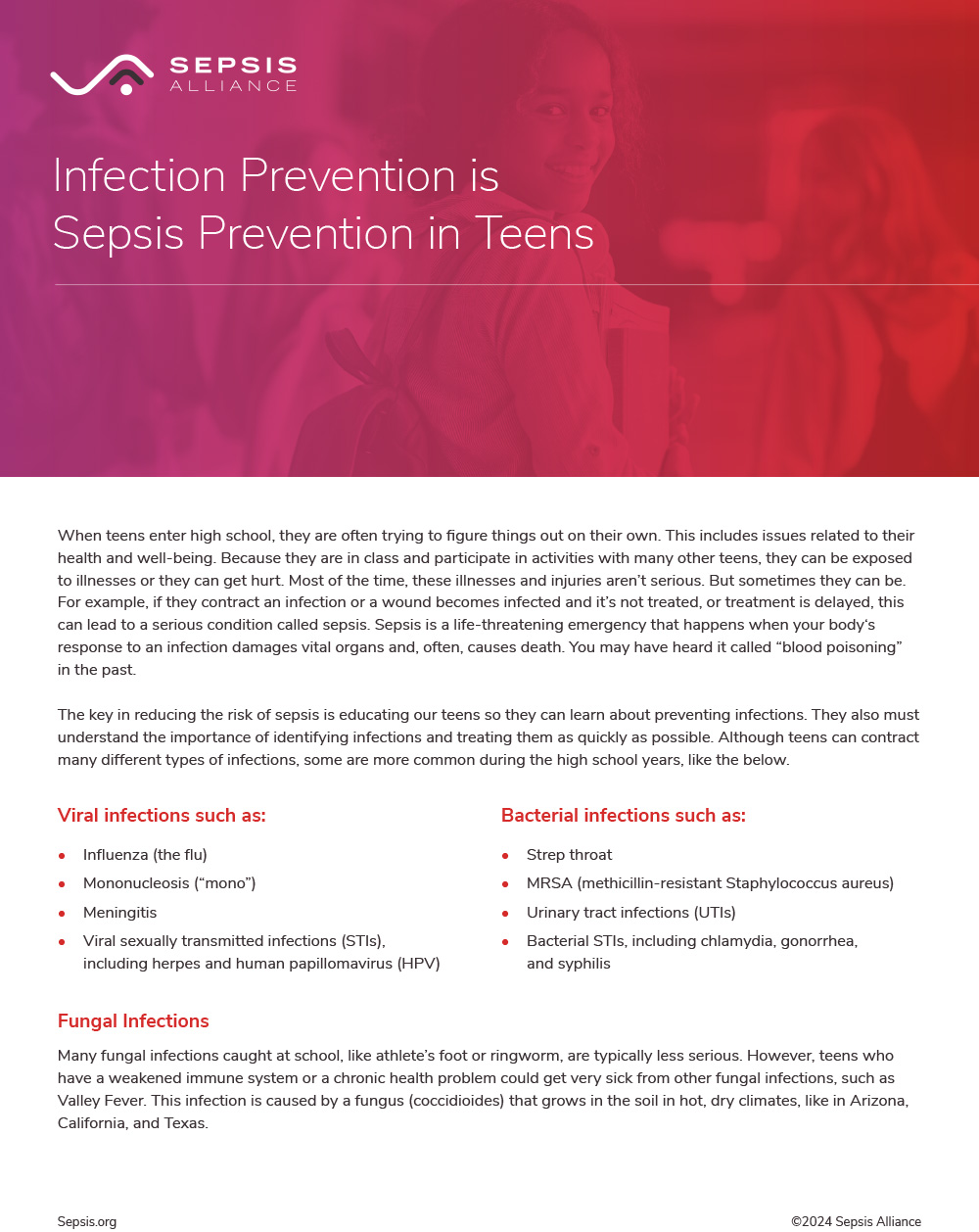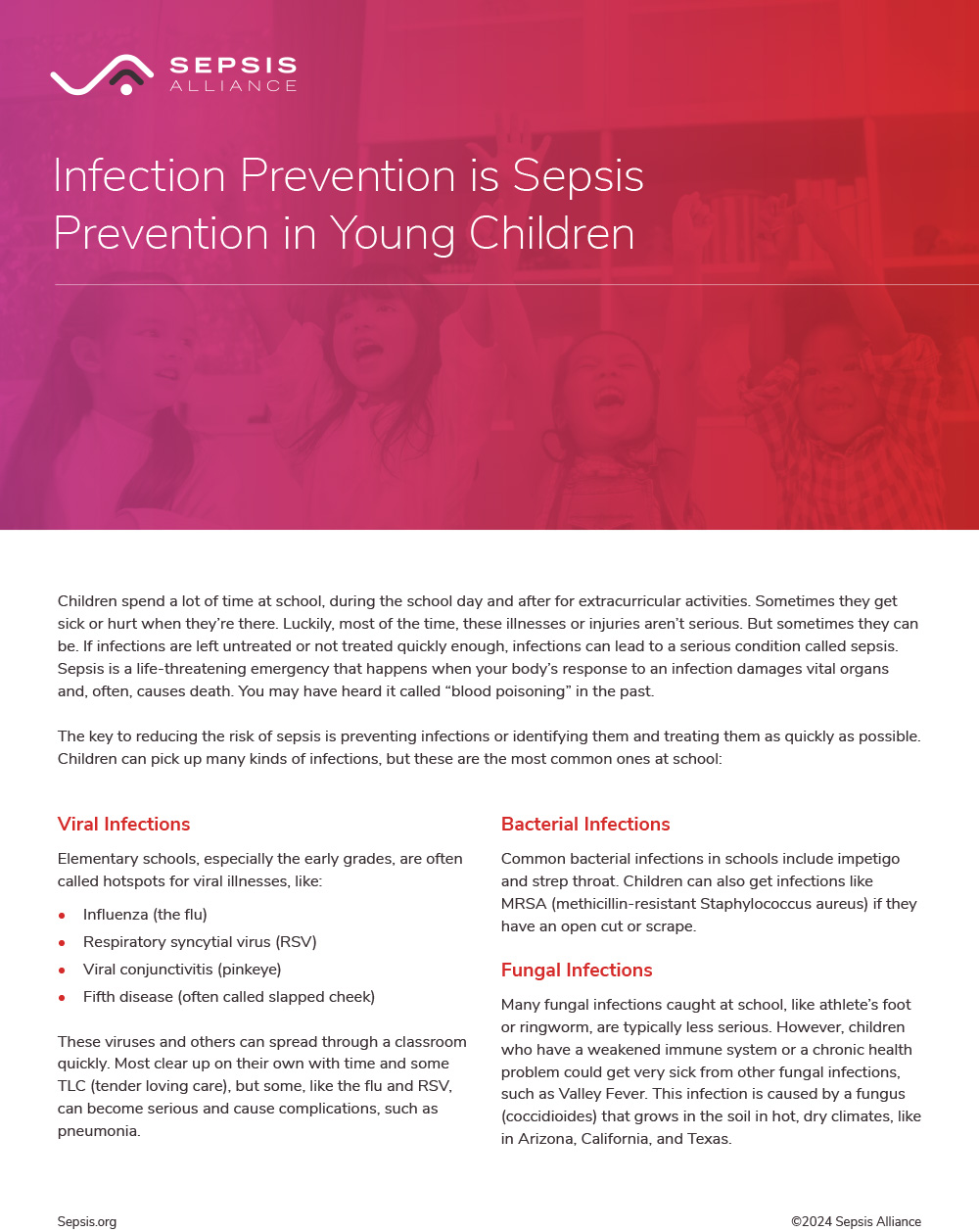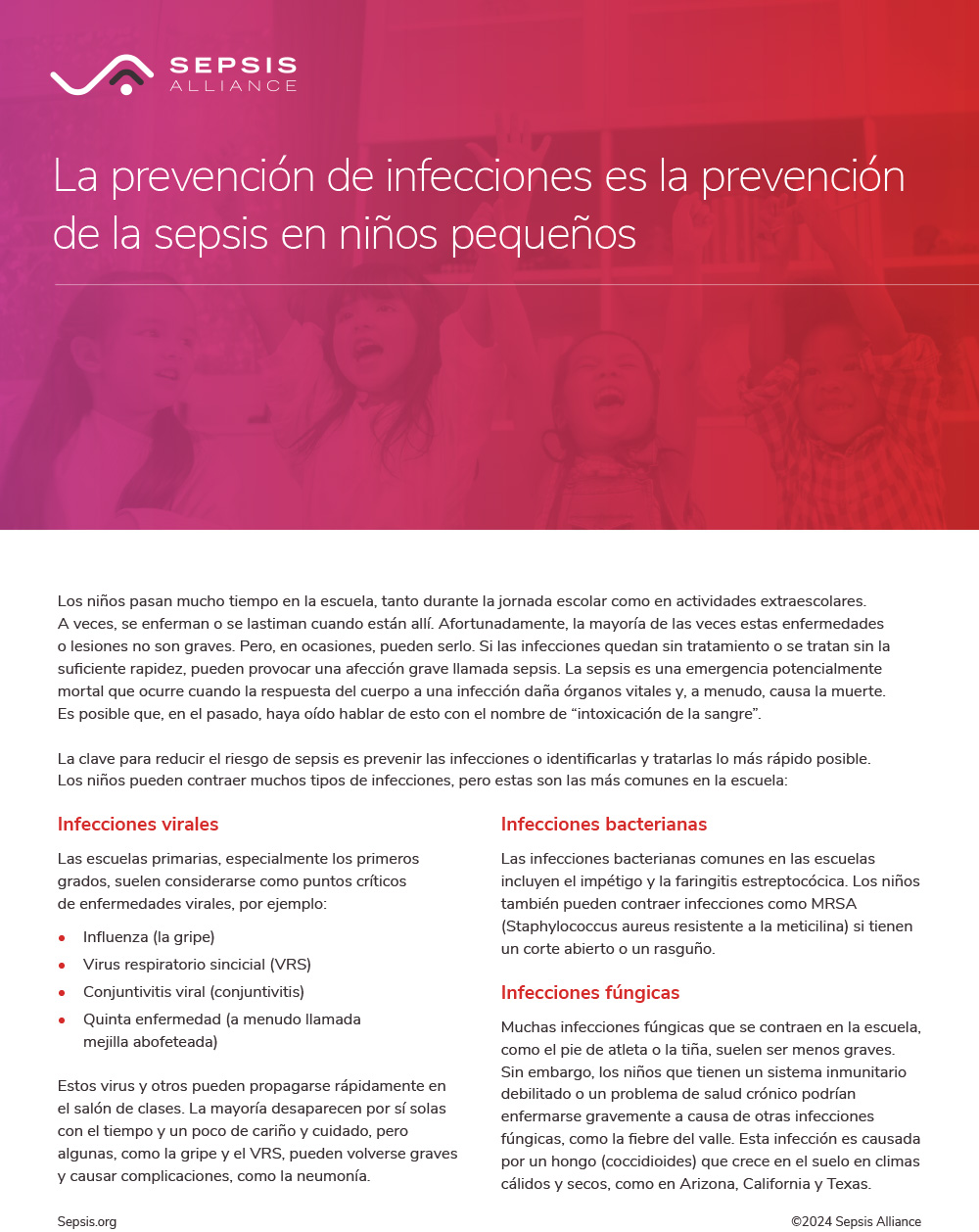Athletes, whether they’re in high school, college, or beyond, are usually in good health. They typically eat well and take care of themselves. So when we think of athletes being sidelined, we often think about them breaking a bone, tearing a ligament, or hitting their head. But athletes can get seriously ill too, like when they get infections that can lead to sepsis.
Some of the infections that could be spread among athletes include:
- Influenza
- Covid-19
- Mononucleosis
- Conjunctivitis
- Meningitis
- Gastroenteritis
- Cellulitis
- MRSA
Sepsis, which was often called blood poisoning, is the body’s life-threatening response to infection. Like strokes or heart attacks, sepsis is a medical emergency that requires rapid diagnosis and treatment.
Suggested Citation:
Sepsis Alliance. Sepsis and Athletes. 2025. https://www.sepsis.org/sepsisand/athletes/
Reviewed May 9, 2025.
This resource is supported in part by an independent educational grant from Merck & Co., Inc.

























































